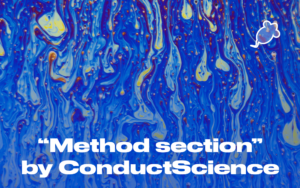
NIH Institutes and Centers (ICs) – Who Does What
The National Institute of Health (NIH) is one of the oldest and the most prestigious health funding organizations in the U.S. Its objective is to

The National Institute of Health (NIH) is one of the oldest and the most prestigious health funding organizations in the U.S. Its objective is to

Introduction The reversible Zinc stain is a widely used staining method for the detection of proteins fractionated by polyacrylamide gels or SDS denatured gels. The

The National Institute of Health (NIH) grant award is basically a formalization of a partnership between the NIH and the grant recipient to ensure abidance

Need stains for your experiments? Click here Introduction Ponceau S staining is a rapid and reversible staining method used for the detection of protein bands

Need Incubators for your lab? Click here As an Amazon Associate Conductscience Inc earns revenue from qualifying purchases Introduction The pulse-chase analysis is

Need stains for your experiments? Click here Silver staining is a powerful technique for protein identification in gels as silver binds to chemical sidechains of

Need Laboratory Equipment for your reasearch? Click here Southern blotting is a hybridization technique used for deoxyribose nucleic acid (DNA). The method was named after

Need help with your Grant Application? Click here Biomedical research has evolved over the past few decades and, together with genetics, comprises one of the

What Is a Grant Application? A grant application is a justified document-of-need submitted to government/private institutions, corporations, foundations, or trusts for research funding. The grant,

The Method Section: Using Citizen Science 00:00 – Introduction 01:09 – Pros and cons of citizen science 04:58 – Local citizen science 06:47 – Creating

Overview Virtual reality was first experienced as the world’s first flight stimulator Link Trainer by Edwin Link (1929) and later as the interactive theatre ‘Sensorama’

Introduction Affinity chromatography is a versatile separation protocol that uses the biological interactions for characterization and detailed analysis of sample components. It is based on
DISCLAIMER: ConductScience and affiliate products are NOT designed for human consumption, testing, or clinical utilization. They are designed for pre-clinical utilization only. Customers purchasing apparatus for the purposes of scientific research or veterinary care affirm adherence to applicable regulatory bodies for the country in which their research or care is conducted.